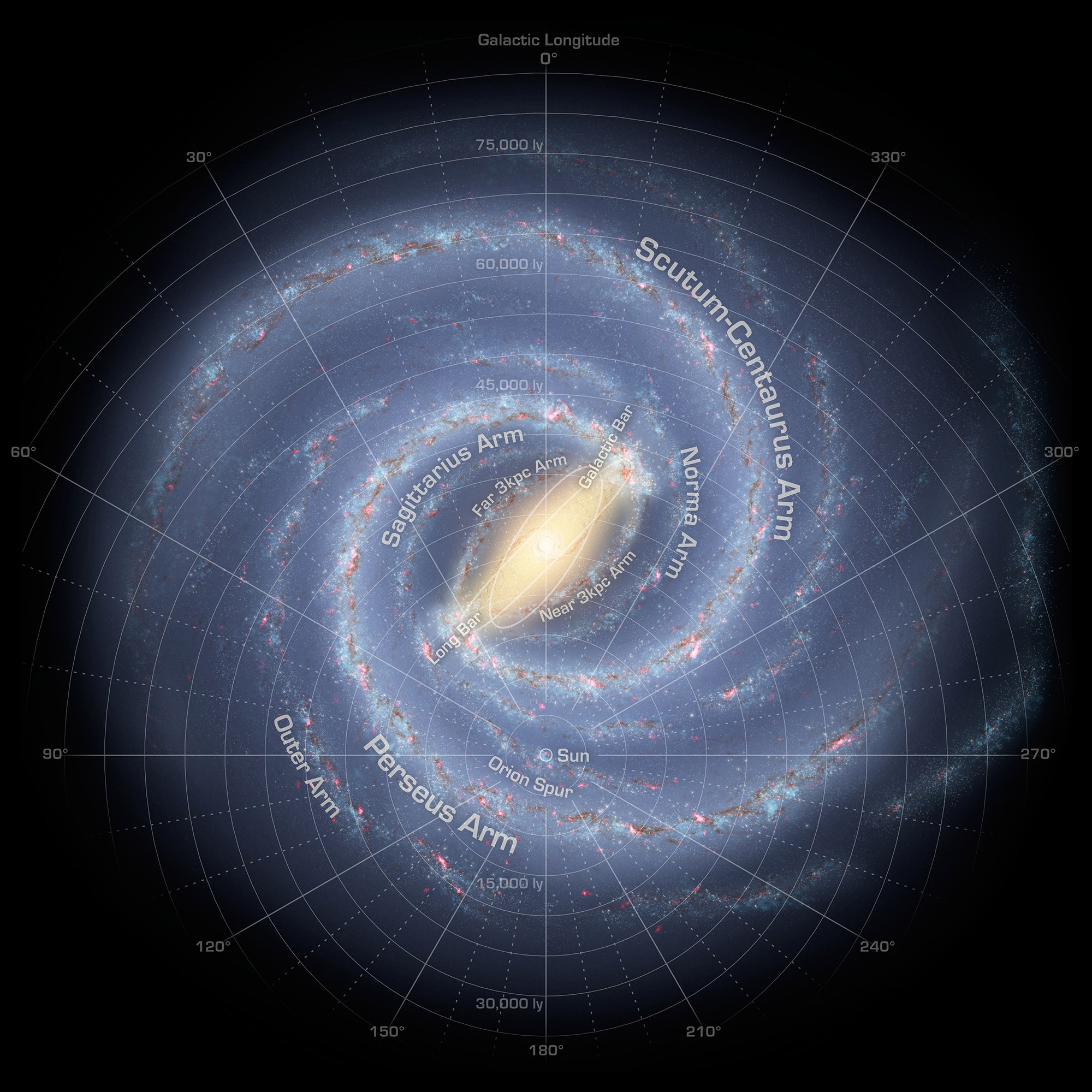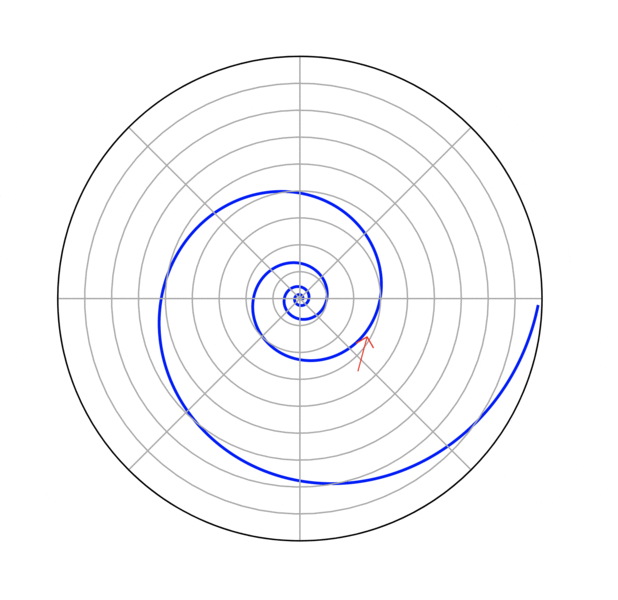Create a free profile to get unlimited access to exclusive videos, sweepstakes, and more!
The shape of the Milky Way: Mapping the far side of the galaxy

What does our galaxy look like if you could see it from the outside?
This is a pretty interesting question. For a long time, we didn't even know we lived in a galaxy that was one among hundreds of billions. Back then — up until about a century ago — it wasn't clear if everything we saw in the sky was in one giant clump, or if the little fuzzy patches we saw were actually separate galaxies (what used to be called "island Universes," which is both poetic and apt).
Then work led by Edwin Hubble (after whom the telescope is named) and done by a team of astronomers determined that the little fuzzies were indeed very far away, and therefore we must live in a separate, smaller structure as well. We already know that the Milky Way — the name of our particular galaxy — was flattened, like a disk, and we were inside it, because we see it as a broad band of light splayed across the sky. If the galaxy were spherical, we'd see stars equally in every direction. Instead, that band means the galaxy is flat.
We see other disk galaxies in the sky, and they show spiral structure. Over time, using a variety of methods, we learned that the Milky Way too is a flat disk with spiral arms, and also determined it has a central bulge and a long, Tic-Tac-shaped "bar" in the middle. The Sun with our solar system is located about 26-27,000 light-years from the galactic center.
But what is the exact shape of the galaxy? How many spiral arms does it have? Are they tightly wound, or do they have a more lackadaisical winding to them?
These questions aren't so easy to answer. Sophisticated techniques have allowed us to map the part of the galaxy around us, but the far side is harder to observe. For one thing, there's a lot of junk in the galaxy that obscures our view. Mostly gas and dust, it absorbs light, and the closer you look toward the center of the galaxy the thicker this stuff is.
Also, because the other side of the galaxy is far away, the sources of light (stars, gas clouds, and such) you want to observe appear closer together — it's like standing next to a forest and being able to easily separate individual trees near you, but seeing them blend together farther away. We call this kind of observation "confusion limited."
However, a team of astronomers have managed to do something rather incredible: They've pinned down the location of a star-forming gas cloud on the far side of the Milky Way, and have used it to create a better map of one of the spiral arms.
The source is a young star that's blasting out microwave radiation in what's called a maser (it's the same physics that makes a laser, but in a different "color" of light). They used a series of radio telescopes across the Earth that are linked together, creating what is essentially a telescope thousands of kilometers across. This array has phenomenal resolution: They were able to track the motion of the maser as the star physically moved in its orbit around the galaxy! Mind you, it takes more than 200 million years to circle the galaxy just once, so this motion is incredibly small.
But once they were able to measure that, they could then see an even smaller effect: The apparent motion the object made as the Earth orbits the Sun. As the Earth moves from one side of its orbit to another, distant objects appear to move back and forth. We call this effect parallax (if you want details, I talk about how this works in Crash Course Astronomy: Distance), and it can be used to determine an object's distance: If it moves a lot it must be closer, and if it moves only a little it's farther out. If you know how much the Earth moves, and measure the angle the object moves, you can calculate its distance.
So they did! The distance they got for this maser was 66,500 light-years: Clear across the galaxy on the other side (and then some), making this the farthest object in the galaxy ever to have its distance measured this way.
What makes this so important is that this means it must be part of a spiral arm we call the Scutum-Centaurus arm (named after the constellations we see it in). Quite a few objects on this side of the galaxy in that arm have been measured, but nothing on the far side. This measurement of the far side maser's distance means they've been able to nail down the position of the spiral arm on the other side of the galaxy.
That yielded something of a surprise, actually. There's an angle that helps define how open or how tightly wound a spiral arm is. Called the pitch angle, if it's 0° then the arm forms a circle, and the bigger the pitch angle is the more open the arm is. Using nearby objects, the Scutum-Centaurus arm appears to have a pitch angle of 14°. But if you also include the maser to anchor the arm on the far side of the galactic center, the pitch angle is more like 22°. That's a significant change.
The Milky Way's arms are open wider than we first thought.
Or if you prefer: We're less tightly wound than we used to think.
The point here is that even though we live inside our galaxy, there's still a lot we're learning about it. It's like being in a smoke-filled room and finally being able to see things on the other side against the far wall. It helps you define the shape and structure of where you are.
And that means our scientific mindset about the Universe has changed a lot over time. The invention of the telescope showed us it was a lot bigger and more populated than we knew, and as time went on it got a whole lot bigger.
And even now, a century after we finally understood the nature of our own galaxy, this local town of ours still has some lovely surprises for us. It’s like wandering around your block and finding a creek running through it you never noticed before. What wonders lie in it, and what treasures still remain unseen?
That's why we keep looking. We live in a beautiful neighborhood, and it's fun to discover more places to visit.





























